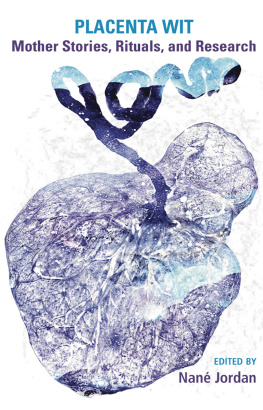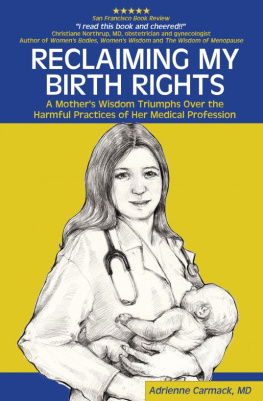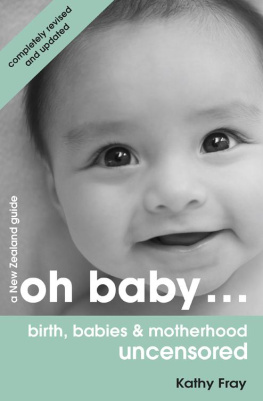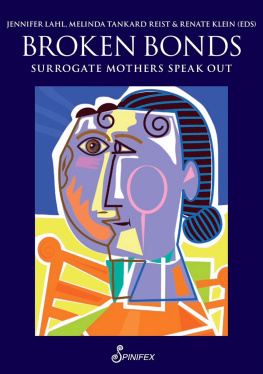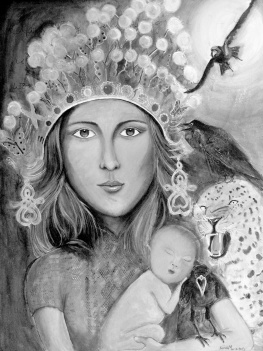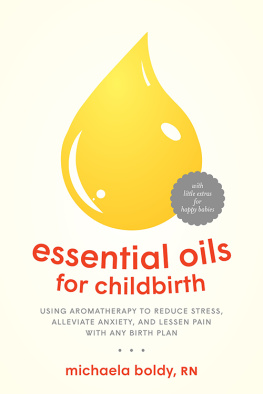PLACENTA WIT
Copyright 2017 Demeter Press
Individual copyright to their work is retained by the authors. All rights reserved. No part of this book may be reproduced or transmitted in any form by any means without permission in writing from the publisher.
Funded by the Government of Canada
Financ par la gouvernement du Canada

Demeter Press
140 Holland Street West
P. O. Box 13022
Bradford, ON L3Z 2Y5
Tel: (905) 775-9089
Email:
Website: www.demeterpress.org
Demeter Press logo based on the sculpture Demeter by Maria-Luise Bodirsky www.keramik-atelier.bodirsky.de
Printed and Bound in Canada
Front cover artwork: Jodi Selander, Celestial Node, 2016, photograph and digital watercolor, 8x10. PlacentaLove.com
eBook: tikaebooks.com
Library and Archives Canada Cataloguing in Publication
Placenta wit : mother stories, rituals, and research / edited by Nan Jordan.
Includes bibliographical references.
ISBN 978-1-77258-107-2 (softcover)
1. Birth customs. 2. Placenta. 3. Mothers. I. Jordan, Nan, 1968-, editor
GT2460.P63 2017 392.12 C2017-902498-1
PLACENTA WIT
Mother Stories, Rituals, and Research
EDITED BY
Nan Jordan

DEMETER PRESS
For my daughters,
Blessed be.
Table of Contents
Acknowledgements
This book is born from the genesis of my thirty-five years of involvement in midwifery and homebirth in Canadaand meeting many placentas over this time. It is to the placenta itself that I owe my gratitude of wonder. I have been a student, practitioner, doula, and researcher in the movement for more humane, woman- and mother-centred birth practices. I am, thus, indebted to, and grateful for, all the midwives, mothers, babies, and placentas, past and present, with whom I have worked and met over these years, as well as the wonderful proliferation of doulas into the birth scene in Canada. We need so much to acknowledge and honour each other and the various forms of labour we do throughout the many spheres and locations of birth giving, as well as the efforts of families to create a better and more loving world for their children from birth onwards.
I especially thank all the authors in this volume for your brilliant contributions. You inspire me. I so appreciate our shared enthusiasm for placentas and the community we made in the writing. Some authors, such as Janet Chawla, Polly Wood, Barbara Alice Mann, Farah Shroff, and Molly Remer, I thank for having already been colleagues on the placenta path.
I wish to acknowledge and thank my recent Social Sciences and Humanities Research Council of Canada postdoctoral tenure from 2014 to 2016 at the Centre dtudes Fminines et dtudes de Genre, at the University of Paris 8, France. This women and gender studies centre was inaugurated in 1974 by feminist writer-thinker Hlne Cixous, with whom, and with whose writing, I had the pleasure of deepening my thinking and practice of birthbirth as a way of living and writing. Without this period of research time and funding, and the treasure of my verdant Paris location and wanderingsactual, literary, and philosophicthis anthology, which gathers the gifts of many voices, would not have come to be. Thanks to Marie-Dominique Garnier in this regard and Anne E. Berger for appreciating my red thread ways and for supporting me to keep doing my feminist scholarship otherwise.
This book has come at a key time in my life, at mid-lifeand is a culmination of many pathways of being a daughter, sister, partner, mother, friend, midwife, doula, artist, scholar and researcher, community worker, traveller, and devotee of birth and the sacred female/feminine. I thank my stepmom, Faye, and my dad, Eric, for your love and encouragement, and for Evans homebirth, so long ago attended by Mary, the lovely midwife with the long braids and soft voice. I give thanks for and to my sister Adia, a dear sister and friend and my cheering section.
My involvement in not only birth communities but in innovative and alternate womens scholarly circles has nourished me to do the creative work and woman-centred research that I yearned to do. In 2001, I found what I was looking for in the Womens Spirituality MA program, formerly based out of New College of California in San Francisco. My gratitude goes to mentorsVicki Noble, Dianne Jenett, and Judy Grahnand to alumna and dear friends in these circles of study and to others I met along the goddess way. Here was and is the power of following your heart, daydreaming, long conversations, and time spent with others in the struggles and joys of birthing a more just, sacred, and sustainable world. Onwards into Canadian academe, I thank my arts-based educational research colleagues, who encouraged my waxing poetic on placentas and trees, especially, life writers Erika Hasebe-Ludt and Carl Leggo, and philosopher Daniel Vokey. I also especially thank Gestare, my womens art collective, with whom so many streams of my life converge, in all we do to gestate womb space for art making and life. Thank you Barbara, Medwyn, and others from our collective over the years.
In 2002, I gave my first academic presentation at an Association for Research on Mothering conference in Toronto on the topic of my masters level homebirth research. My pathway with placentas was especially nourished in this scholarly venue of motherhood studies with ARM , now MIRCI, and Demeter Press itselfwhose many books and authors I love to read and always relish, whose wise words carry me forward. What a pleasure and gift to contribute this volume to the chorus! I count the amazing MIRCI and Gift Economy conference in Rome, Italy, 2015, attended with Barbara Bickel and Vicki Noble, as the midwifery I needed for this book. Thank you to Andrea OReilly for all you do and for your encouragement in Rome to produce this volumea timely undertaking. With continuing thanks to all at Demeter Press, to Angie for keeping me posted and organized, and to Jesse for your editing insight and care.
I also want to acknowledge philosopher Genevieve Vaughan, who opened my thinking toward the maternal gift economy, from which I deepened the roots for placental thinking. Gen saw the gifting relations of the placenta in my presentation at the ARM and Gift Economy conference in Toronto in 2008 and invited me to Rome to share moregrazie! Thus, like the many nourishing networks of vascular placental roots, it is my evolvement and exchange within richly interconnecting communities and relations that my vision, voice, and creative work is gestated and born. Not least in this nourishing network, I thank my familyChris, Danaan, and Shantifor all our birthings and your love and for laughing at your mama who types so very loudly on her old keyboard. I love you all the more.
Introduction
NAN JORDAN
M Y FAVOURITE PLACENTA METAPHOR is that of a tree. The placenta, with its circular mass of vascular networks, resembles tree roots, interlacing as they extend into the nourishing soil of the earth. The umbilical cord is like a long tree trunk that grows up from these roots. Babies are the fruits and flowers on this human tree of life. A deeply symmetrical relationship exists between placentas and trees, as if we ritualize through our bodies the interconnections among living forms. And isnt there something radical about placentas? Radical, as in the etymology of this word, which means going to the roots. Placentas are radical, red, and bloody rawthe very rooty material of our maternal origins. After conception, placentas nourish our primary tie to life through a physical and symbolic relationship with our mothers. The placenta communicates this relationship through a dialogue of blood in pulsations of mother-baby heartbeats. Later, this placental language releases to the rhythms of birth. Secondary gifts of the placenta are then possible after birth .

